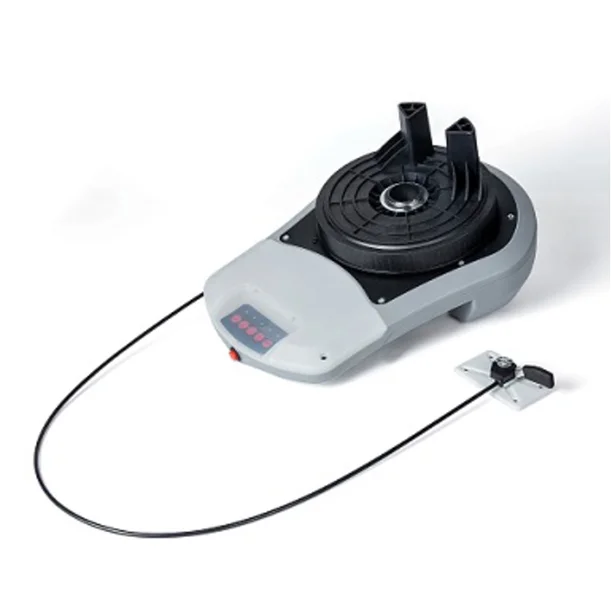- This topic is empty.
-
AuthorPosts
-
2025-06-17 at 1:53 pm #9766
In today's fast-paced industrial and commercial landscape, the roller door opener has become an indispensable component of modern infrastructure. It provides a motorized solution for opening and closing heavy-duty roller doors with minimal human intervention, ensuring operational efficiency, improved security, and ease of access control. Whether installed in a high-throughput logistics hub, a residential garage, or a chemical plant, the roller door opener facilitates smooth, reliable, and safe door operations under varied environmental and load conditions. Moreover, the advent of smart control systems and IoT technology has elevated the role of roller door openers from simple electromechanical devices to intelligent subsystems integrated into broader building automation frameworks. Their importance cannot be overstated in facilities that prioritize security, energy savings, and seamless user experience.

Core Components of a Roller Door Opener
A modern roller door opener is a composite of mechanical and electronic subsystems, each engineered to perform a specific task with precision. The interplay between these subsystems determines the efficiency, safety, and lifespan of the entire unit.
Motor Assembly
The motor is the prime mover in a roller door opener. Typically, motors are classified into AC induction motors and DC brushless motors. AC motors are favored in heavy industrial applications due to their capacity to handle high inertia loads, longer duty cycles, and compatibility with three-phase power. On the other hand, DC motors, especially brushless variants, are gaining traction in smart homes and commercial garages because they offer quieter operation, variable speed control, and lower maintenance due to fewer wear-prone components.
Additionally, motors are often fitted with thermal sensors, electromagnetic brakes, and overload protection systems to mitigate the risk of overheating or damage during operation. The sizing of the motor—both in terms of horsepower and torque—must correspond precisely with the door’s mass, frequency of use, and expected operational speed.
Gearbox and Drive System
The gearbox functions as the torque transmission medium, converting high-speed, low-torque motor output into a low-speed, high-torque motion suitable for door actuation. Depending on application-specific needs, various drive types are deployed:
-
Helical or planetary gearboxes offer compact, efficient transmission with high torque density, ideal for space-constrained industrial sites.
-
Chain drives provide robust and cost-effective solutions for rugged outdoor environments or large rolling shutters.
-
Belt drives, while not as heavy-duty, are suitable for residential and low-noise commercial applications.
-
Direct shaft coupling, in high-end systems, minimizes backlash and improves responsiveness.
Materials used for gears—hardened steel, bronze alloys, or polymer composites—also affect durability, lubrication cycles, and resistance to corrosion or debris intrusion.
Control Unit (Controller / Logic Board)
The controller regulates all door operations based on sensor input and user commands. At its core, it comprises a microcontroller or PLC unit programmed to handle sequential logic, safety interlocks, and communication protocols. Higher-end roller door openers feature embedded firmware that supports advanced functionalities, including soft start/stop, variable speed profiles, error diagnostics, auto-close timers, and adaptive learning for usage patterns.
The controller also serves as the interface for external triggers such as remote control units, mobile apps, wall switches, or access card systems. Units may offer both dry contact terminals for basic installations and RS485/BACnet/IP interfaces for integration into building automation systems.
Sensor and Safety Assemblies
No roller door opener is complete without robust safety mechanisms. The minimum standard includes:
-
Infrared photo beams, mounted near the door base, to detect obstructions and reverse motion automatically.
-
Limit switches, mechanical or magnetic, to define precise open and close positions, ensuring the door doesn’t overshoot or stall.
-
Anti-drop safety brakes, particularly for large rolling shutters, that engage automatically during motor disengagement or cable failure.
-
Emergency manual override, typically a chain hoist or crank, to enable manual operation during a power outage.
For environments with frequent human interaction—such as parking structures or retail storefronts—compliance with standards like EN 12453 and UL 325 is critical.
Mechanical Design Considerations for Roller Door Openers
Proper mechanical design is essential for ensuring that a roller door opener operates reliably under different loads and environmental conditions. Several engineering factors must be considered during system selection and installation.
Load Capacity and Duty Cycle
Roller door openers are categorized based on load ratings and the number of cycles they are expected to perform daily. For example, a high-capacity industrial shutter weighing over 500 kg will require a heavy-duty motor with a steel gearbox and thermal protection. Light-duty systems used in residential garages might operate just 3–5 times per day, while warehouse doors may cycle 50+ times, requiring reinforced internal components.
Door Balancing Mechanisms
To reduce stress on the motor and drive system, doors are usually counterbalanced using torsion or extension springs. These springs must be properly calibrated to ensure smooth operation. A poorly balanced door increases wear on the opener and may cause erratic performance, higher energy consumption, and premature failure of the motor unit.
Environmental Adaptability
If the roller door opener is to be installed outdoors or in a dust-heavy industrial area, it must be built with an appropriate enclosure. Weather-sealed motors, stainless steel components, and IP-rated control boxes are necessary to withstand corrosion, moisture, and extreme temperatures.
The roller door opener is far more than a simple convenience—it is a mission-critical component of access control, safety assurance, and energy efficiency across a wide range of industries and environments. With their combination of mechanical reliability and smart control capabilities, roller door openers contribute significantly to the automation and security of modern facilities. Whether for a bustling logistics hub, a quiet residential garage, or a complex commercial site, choosing and maintaining the right roller door opener ensures smooth, safe, and efficient operation for years to come.
https://www.ztdooropener.com/Roller-door-opener
http://www.ztdooropener.com
Shenzhen Zhongtian Door Industry Co., Ltd. -
-
AuthorPosts
- You must be logged in to reply to this topic.
